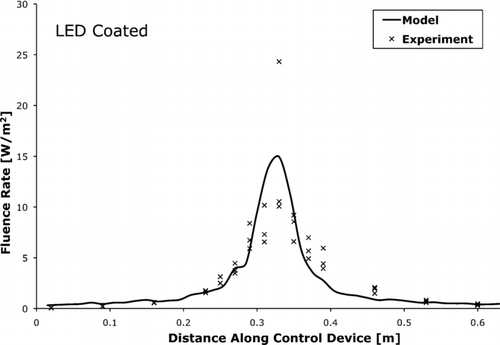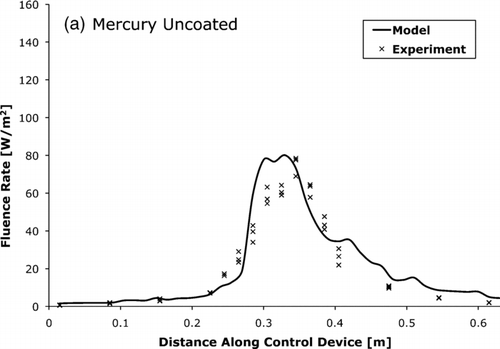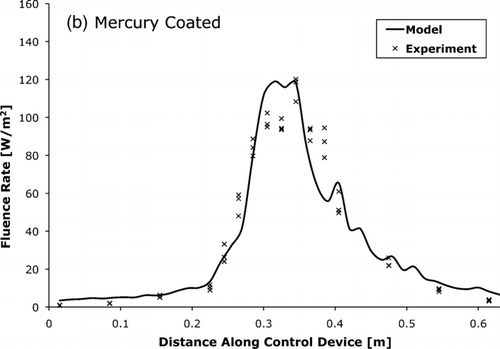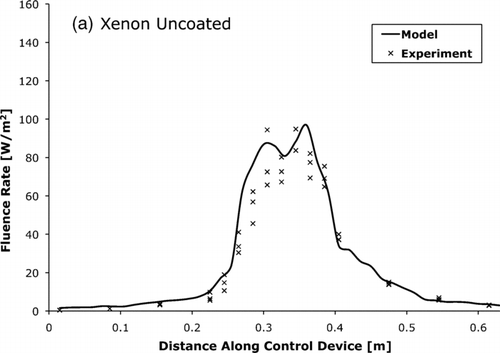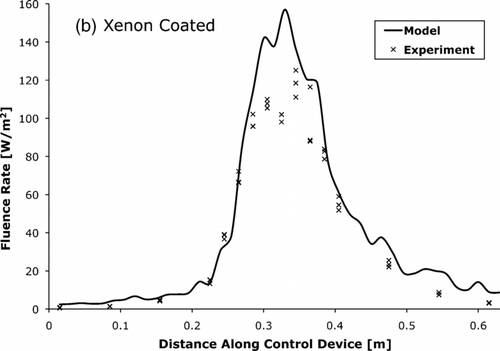Figures & data
FIG. 1 Schematic of the experimental test system used to evaluate the bench-scale flow-through UVGI control devices.
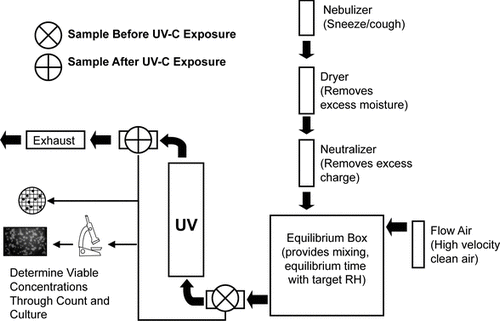
FIG. 2 Illustration (not to scale) of the 2-D axisymetric (along dashed line) model geometry for the flow-through control devices with (a) mercury and xenon lamps and (b) LEDs.
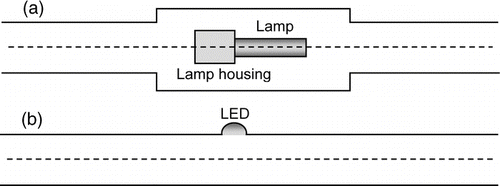
FIG. 3 Particle size distributions of mass concentration for (a) B. subtilis and (b) M. parafortuitum bioaerosol.
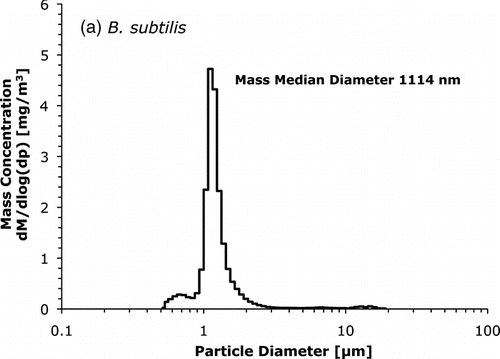
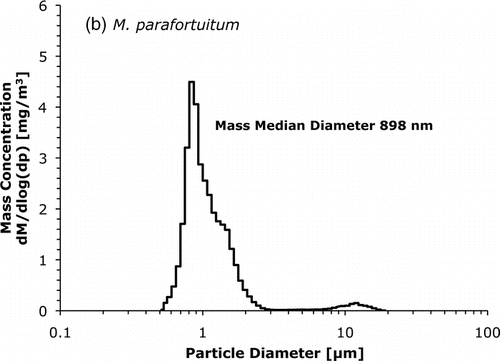
FIG. 4 Surviving fraction versus fluence for B. subtilis at 50% relative humidity. Error bars represent one standard deviation of the mean (n = 16).

FIG. 5 Surviving fraction versus fluence for B. subtilis at 15% relative humidity. Error bars represent one standard deviation of the mean (n = 14).
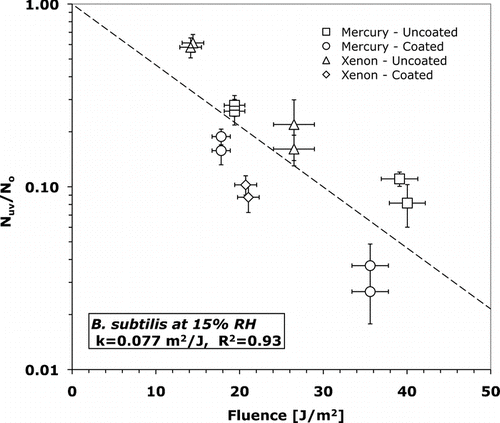
FIG. 6 Surviving fraction versus fluence for M. parafortuitum at 15% relative humidity. Error bars represent one standard deviation of the mean (n = 9).
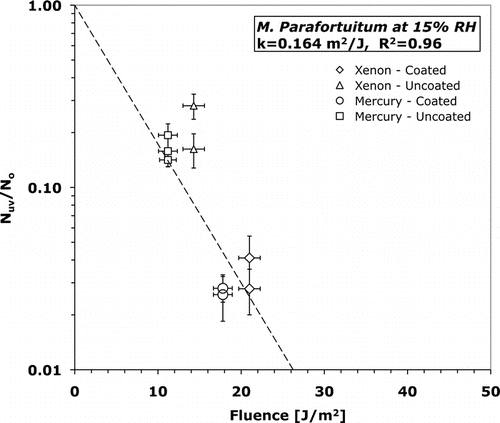
TABLE 1 Experimental scenarios and comparison between control device effectiveness measured experimentally (average +/− SD) and modeled for UV inactivation of airborne B. subtilis and M. parafortuitum
FIG. 7 The UV-C fluence rate for LED control device with coated tube walls as measured by actinometry and predicted by the photon trace model.
